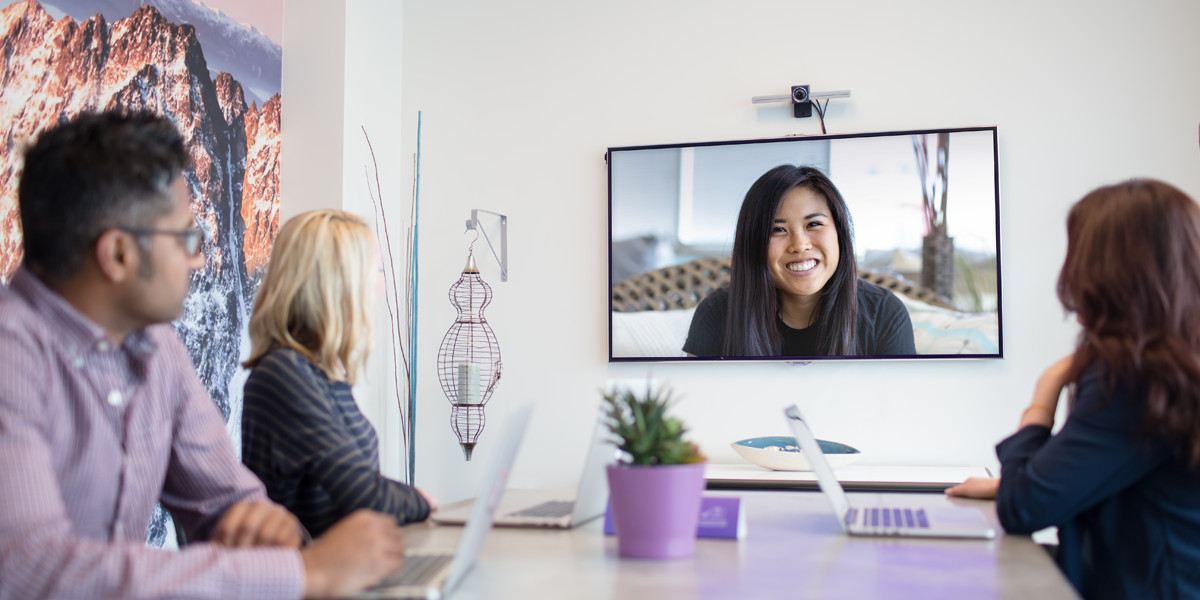Whether you are using web or unified communications technologies, there are video meeting best practices to follow when hosting a video conferencing meeting.
Vyopta hosts video and web conferencing meetings all day long. At any given time we have several internal collaboration meeting happening at once, integration personal VMR’s, WebEx for support, software clients like Jabber, and external meetings in video conference rooms.
Since every organization uses video in different ways, it is always best to optimize for your users with their comprehensive data and analytics. The importance of having data and analytics is crucial. You can’t manage what you don’t measure.
Consider this scenario: a branch of a major financial institution uses a handful of video conference rooms and personal endpoints for employees. The personal endpoints are integrated into the company culture and are used daily, making up a large majority of overall video minutes for a given quarter. The expensive HD video conference room systems are highly underutilized by comparison, but without reporting, their video administrator will be in the dark which means their video administrator could be making decisions out of estimates or assumptions.
The Battle of Internal vs. External
The two types of video meetings are internal and external. So, what’s the big difference?
Internal meetings
Vyopta employees conduct internal meetings in a variety of ways. Having personal VMR’s, gives everyone in the company access to their own bridge and an easier means of scheduling video meetings. Something you hear around the office a lot is, “Let’s meet on my bridge.” So when an employee schedules a meeting, remote participants, and other employees can join in from their personal endpoints, software endpoints, audio and VOIP. Internal meetings are typically faster since it can be taken right at your desk or in a huddle space and takes much less fan fare to set up.
External meetings
For external meetings with partners and customers, we usually meet in an available conference room. Meeting in a conference room allows users to have a private space with much less of a chance for interruptions. Most of our video conference rooms seat 4-8 people so we can comfortably get somebody from every department if we need to for an efficient collaboration experience and ensure that everyone is on the same page. We invite customers and partners to meet with us from hardware and software platforms, whatever makes it easier to join because an external meeting means it’s no longer just about our organizations’ wants and needs.
Video Meeting Best Practices and Telepresence
Phones, We Hardly Knew You
If we’re not in a video meeting we’re usually on chat. Our company has evolved from having phones at everyones desk to having only a few in our entire building. It’s a clear indication that the power of video collaboration has become integrated into our company culture over time and phones aren’t worth the space they take up on the desk when the power of collaboration can be at the click of a keyboard.
Use Conference Rooms Whenever Possible
Our conference rooms are designed to be a welcoming space for collaboration. We even have a few conference rooms which are named after famous places in the Marvel / DC Universe ex: “Hall of Justice”, “Gotham City” and “X-Mansion” and for our Austin team, half of our conference rooms names are named after various Austin landmarks like Barton Springs, or Lady Bird Lake.
Conference rooms are super versatile with many uses including weekly sales meeting, marketing meetings and company-wide meetings. Our sales team also likes to chat with customers in the conference room and occasionally take a break from the desktop endpoint which is a nice change of pace from the typical grind.
Personal Desk Endpoints and Bridges for Employees
At Vyopta, every employee has their own bridge. Each bridge is used for the scheduled meeting by default. If there is a scheduling conflict and an employee from sales wants to join in for the 2nd half of a meeting they can call into the bridge from their personal endpoint right from their desk.
For our customer support video calls a virtual meeting room (VMR) is assigned and sales team members call into the bridge from their desks along with a support team member and development team member if they need to be.
Make Software Clients Available
Working remote doesn’t mean the collaboration should be impeded. Whether it’s working from home or calling in from a software client when the team is at a conference thousands of miles away, working remote has never been easier.
Web conferencing for sales and support is a huge point of interest, especially for software companies that need presentation and screen sharing capabilities.
Manage Your Video Network With Collaboration Analytics
We use a wide variety of video resources for a small company because we have to develop and verify that our software works with all of them. As a result, we use vAnalytics Real Time Monitoring and Historical analysis to track the utilization and quality of all of our hardware and soft endpoints so we are constantly optimizing our network. We can see trends in licensing, utilization, adoption and call quality all from a single comprehensive platform. We also use Analytics for WebEx to track power users, participants, and individual WebEx meetings so we have the full picture of our collaboration environment. When you manage your video network with collaboration analytics, you’re taking the step to ensuring that video collaboration is a priority.
Video meetings have become a versatile collaboration space and there is really no way to tell what is going to catch on with your users. The fastest way to grow adoption is to understand what your users like and implement the tools to support it.
Learn how to manage your video network with collaboration analytics with Vyopta.






